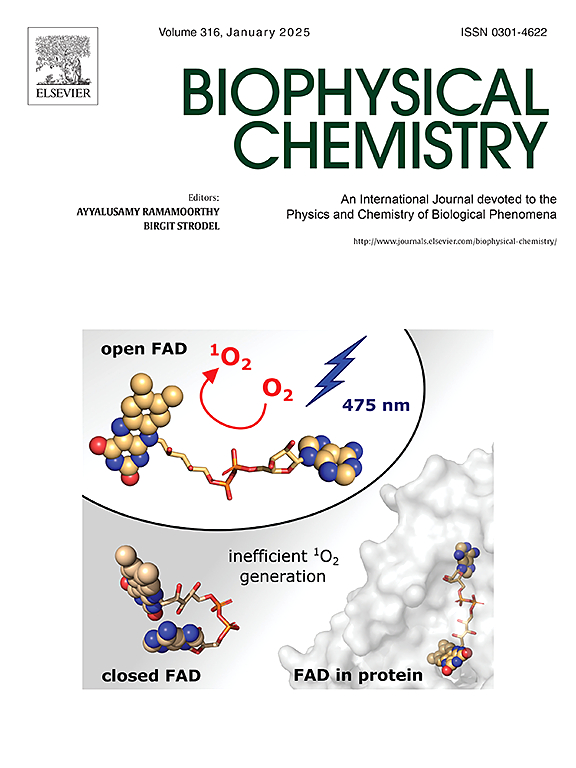胆红素纳米技术:生物医学的创新途径
IF 2.2
3区 生物学
Q2 BIOCHEMISTRY & MOLECULAR BIOLOGY
引用次数: 0
摘要
胆红素是血红素分解代谢的产物,在高浓度(250-300 μM)时具有毒性,而在治疗浓度(~ 20-200 μM)时具有有效的抗氧化、抗炎、免疫调节、细胞保护和神经保护作用。尽管具有治疗潜力,但其在临床实践中的应用受到水溶性差、不稳定性和快速代谢的阻碍。纳米技术克服了这些限制,并赋予胆红素纳米修复的优点:对所需器官/组织的靶向作用,通过延迟药物从体内消除而提高治疗效果,改善生物屏障的运输,在单一药物中结合治疗和诊断特性的能力。本文综述了胆红素纳米系统的化学合成、治疗机制和临床前应用。特别是,胆红素与大分子共价结合获得的纳米结构,胆红素在纳米载体中的包封,胆红素与金属纳米颗粒的结合以及无机化合物的纳米功能化被考虑;综述了纳米胆红素的治疗试验资料。虽然对动物模型和体外系统的研究表明,纳米胆红素配方改善了生物分布,降低了毒性,提高了疗效,但迄今为止还没有临床试验验证纳米胆红素配方。关键的障碍可能包括在可扩展合成、长期生物相容性、可重复给药纳米制剂方面尚未解决的挑战。因此,进一步开发纳米胆红素治疗药物用于临床实践迫在眉睫。本文章由计算机程序翻译,如有差异,请以英文原文为准。

Bilirubin nanotechnology: An innovative approach in biomedicine
Bilirubin, a product of heme catabolism, is toxic at elevated concentrations (>250–300 μM in blood serum), whereas at therapeutic concentrations (∼20–200 μM) exerts potent antioxidant, anti-inflammatory, immunomodulatory, cytoprotective and neuroprotective effects. Despite the therapeutic potential, its use in clinical practice is hampered by poor aqueous solubility, instability, and rapid metabolism. Nanotechnology overcomes these limitations and additionally imparts to bilirubin the advantages characteristic of nanopreparations: targeted action on the desired organ/tissue, increased therapeutic efficacy by delaying drug elimination from the body, improved transportation over biological barriers, the ability to combine therapeutic and diagnostic properties in a single agent. The review analyses the chemical synthesis, therapeutic mechanisms, and preclinical applications of nanosystems comprising bilirubin. In particular, nanostructures obtained by the covalent binding of bilirubin to macromolecules, bilirubin encapsulation in nanocarriers, bilirubin conjugation with metal nanoparticles and nanofunctionalization of inorganic compounds are considered; the data on the therapeutic trials of nanobilirubin are summarized. While studies on animal models and in vitro systems demonstrate improved biodistribution, reduced toxicity, and enhanced efficacy, no clinical trials to date have validated nanobilirubin formulations. Key barriers may include unresolved challenges in scalable synthesis, long-term biocompatibility, reproducible dosing of nanoformulations. Hence, further development of nanotherapeutic bilirubin agents for clinical practice is urgent.
求助全文
通过发布文献求助,成功后即可免费获取论文全文。
去求助
来源期刊

Biophysical chemistry
生物-生化与分子生物学
CiteScore
6.10
自引率
10.50%
发文量
121
审稿时长
20 days
期刊介绍:
Biophysical Chemistry publishes original work and reviews in the areas of chemistry and physics directly impacting biological phenomena. Quantitative analysis of the properties of biological macromolecules, biologically active molecules, macromolecular assemblies and cell components in terms of kinetics, thermodynamics, spatio-temporal organization, NMR and X-ray structural biology, as well as single-molecule detection represent a major focus of the journal. Theoretical and computational treatments of biomacromolecular systems, macromolecular interactions, regulatory control and systems biology are also of interest to the journal.
 求助内容:
求助内容: 应助结果提醒方式:
应助结果提醒方式:


